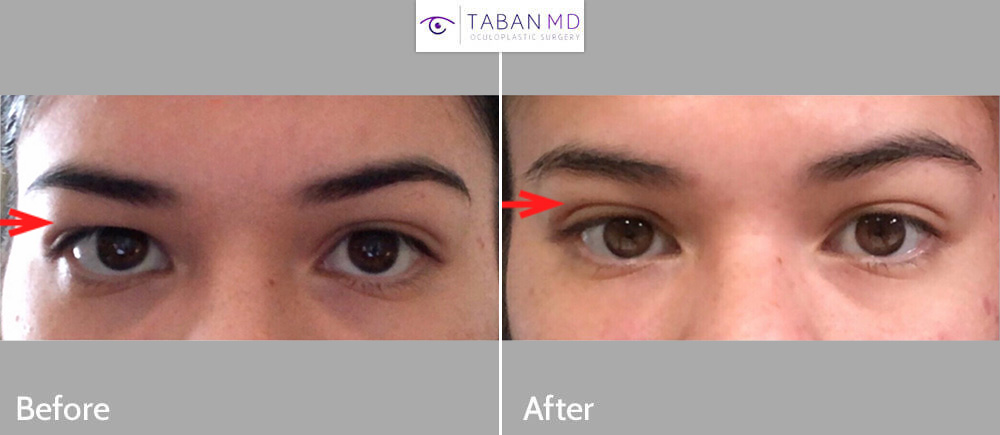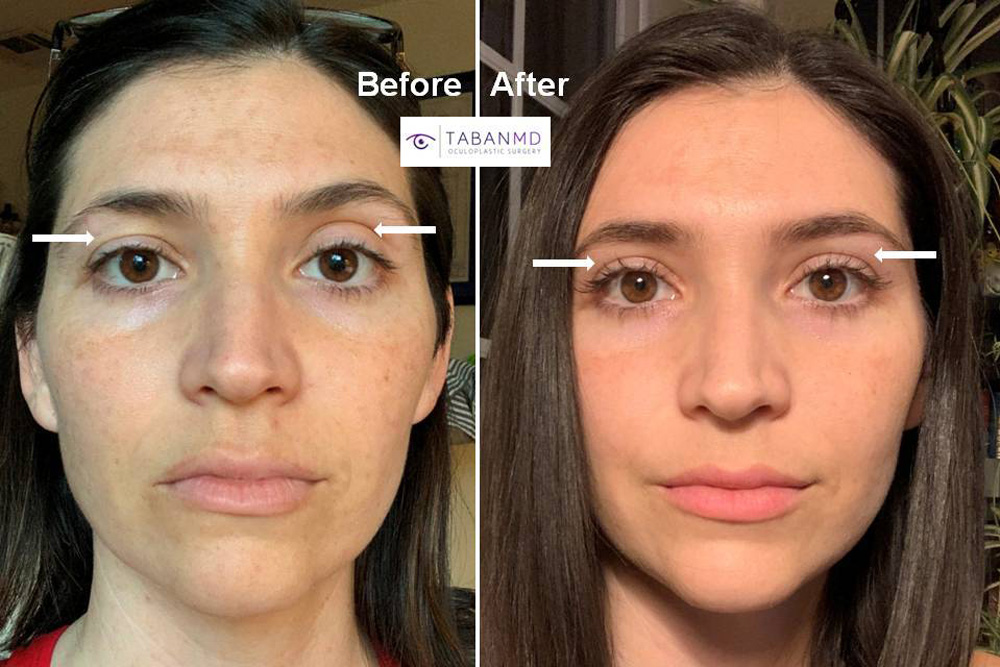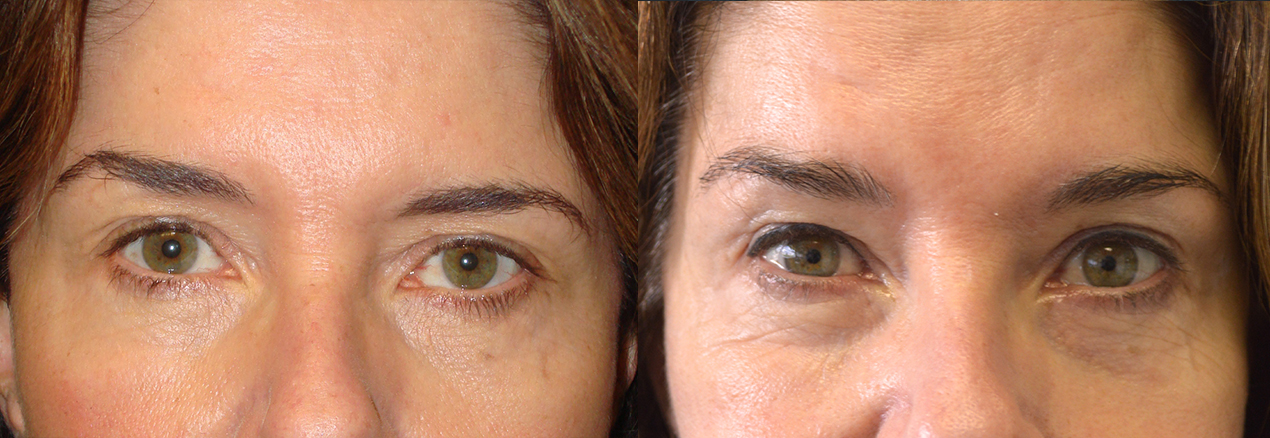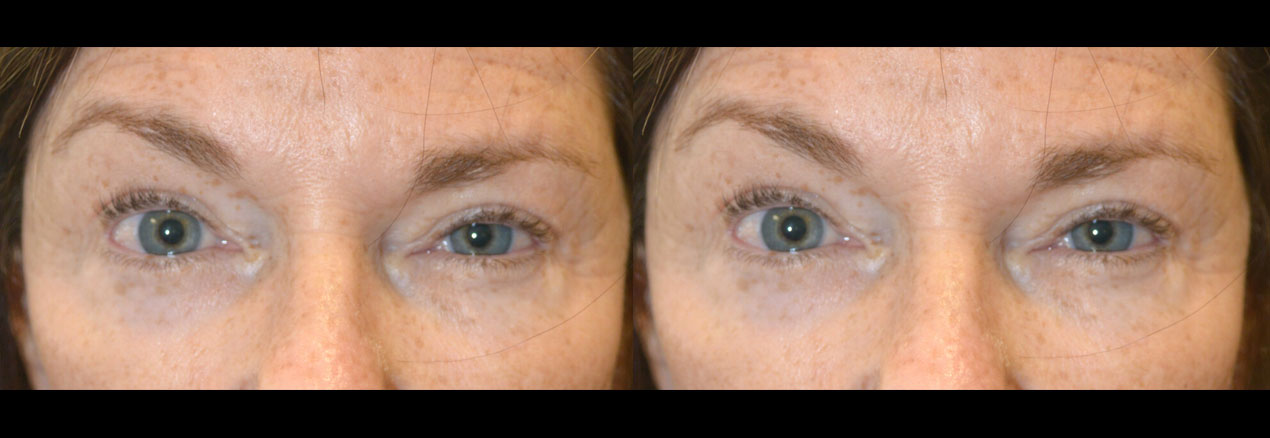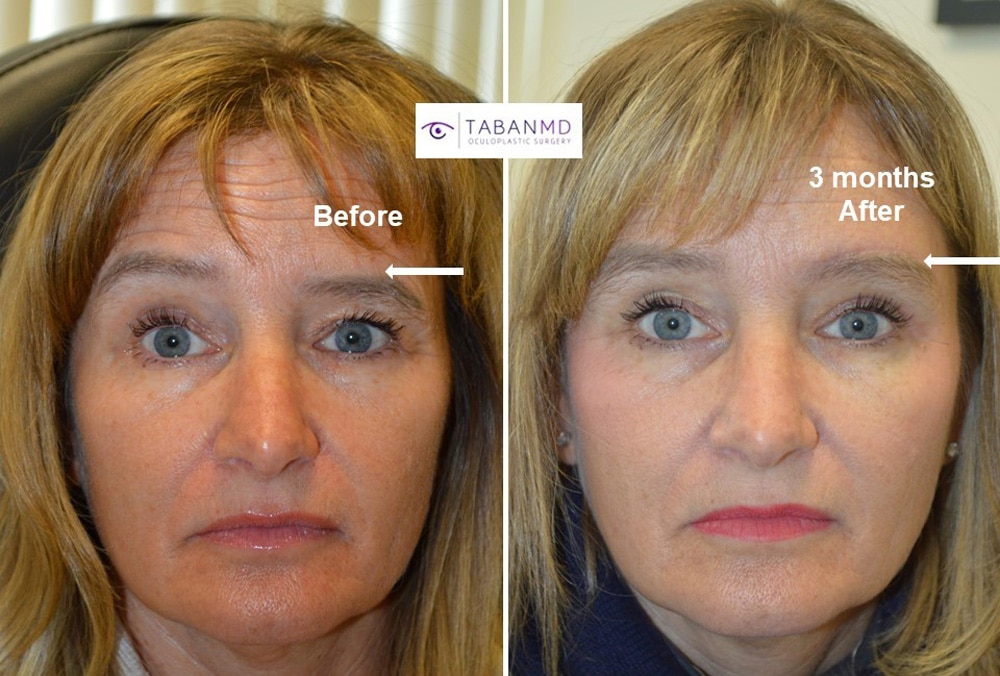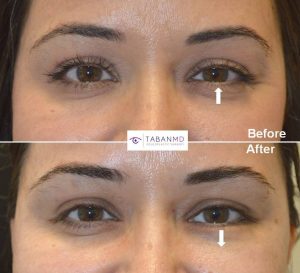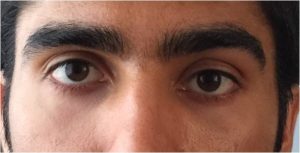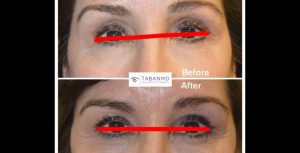Eye Asymmetry
What is Eye Asymmetry?
Asymmetrical or uneven eyes are practically normal but surgery and treatment options can help. For that reason, treatment can be very subtle or very obvious to the patient. The eye asymmetry could become more apparent when smiling or tired depending on the cause. When the difference between the two eyes is more obvious, it can become bothersome to the patient.
Eye asymmetry size can be caused by many factors. True eye asymmetry size (one eyeball being bigger or smaller than the other) is rare but can happen. Most commonly, the eye asymmetry is an illusion due to eyelid asymmetry, eyeball position asymmetry, and/or orbit (eye socket). A detailed Oculoplastic exam is necessary to determine the cause and the possible treatment for asymmetrical eyes. Contact Dr. Taban in Beverly Hills to schedule a consultation today.
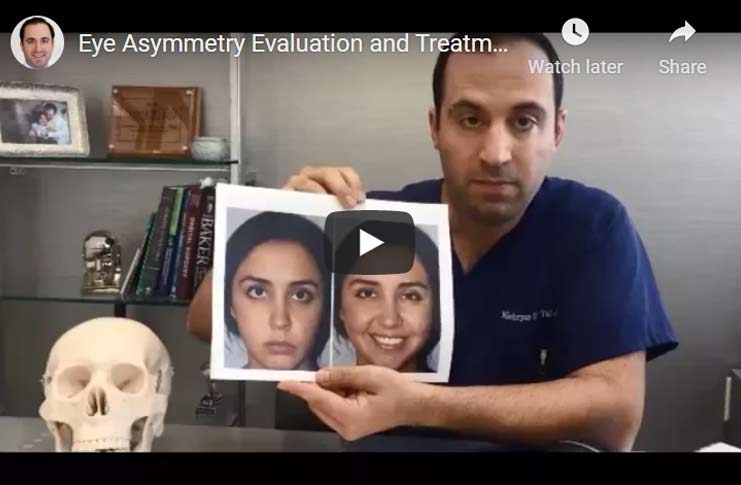
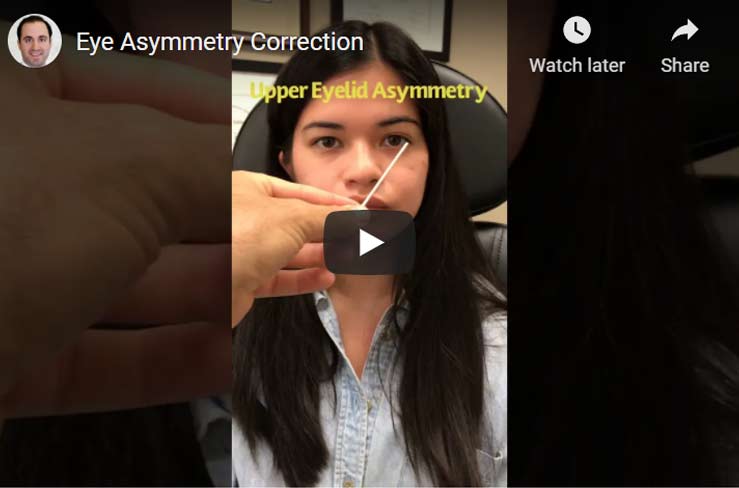
Eyelid or Eye Asymmetry Treatment Options
Eye Asymmetry – Upper Eyelid Ptosis
Another common cause of eye asymmetry is asymmetric upper eyelid ptosis (droopy upper eyelid). Due to, the eye with the droopier eyelid appears smaller. Furthermore, there are various causes of upper eyelid ptosis. One of the best treatment options is ptosis droopy eyelid surgery.
Eye Asymmetry – Complex Upper Eyelid Asymmetry
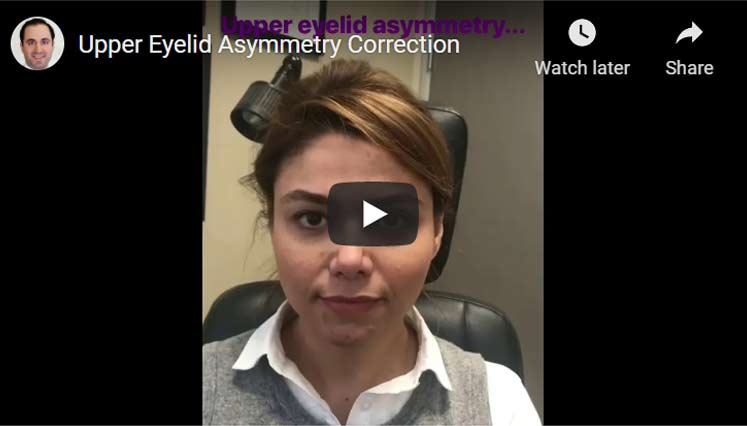
Eyelid Asymmetry-Eyelid Hollowness
If there is more hollowness around one eye, that can cause the eyes to look asymmetric. Treatment could be non-surgical eyelid filler injection or fat injection. Learn more about eyelid filler injection.Eye Asymmetry – Upper Eyelid Retraction
Another, cause of eye asymmetry size, is upper eyelid retraction. For the reason that, the upper eyelid is higher than normal, where the eye appears bigger than the other eye. Upper eyelid retraction could be congenital/inherited due to thyroid eye disease, postsurgical, etc. In many cases, the best treatment option is upper eyelid retraction surgery.
Eye Asymmetry – Lower Eyelid Retraction
If one lower eyelid is lower than the other eye, then that eye would appear larger. There are various causes of lower eyelid retraction including congenital/inherited, post-blepharoplasty eyelid retraction, and post skin cancer surgery. Treatment usually involves elevating the lower eyelid, through hidden transconjunctival approach with possible midface/soof lift and/or internal spacer graft.
Eye Asymmetry – Eyebrow Asymmetry
If one eyebrow is higher or lower than the other, that can make the eyes look asymmetrical. Eyebrow position is determined by genetics, facial bony structure, muscle/nerve function, and underlying eyelid. For instance, a droopy upper eyelid (ptosis) can cause the same side eyebrow to elevate in order to assist lift the droopy eyelid.Eye Asymmetry – Lower Eyelid Asymmetry
Eye Asymmetry – Eyeball Position or Orbit Eye Asymmetry – Proptosis
If one eyeball is more bulging (protruding) than the other eyeball, it will make the eye appear larger. Also, there are various causes of bulgy eyes including genetic and inherited. In contrast, Graves thyroid eye disease, shallow eye socket, and flat upper cheekbone can cause bulgy eyes. Above all, a bulging eye can be treated via orbital decompression surgery to make the eyeball go back.
Eye Asymmetry – Enophthalmos (Sunken Eye)
Another related cause of eye asymmetry is if one eyeball is more sunken than the other eyeball. Certainly, enophthalmos makes the eye appear smaller. As a result, there are various causes including genetic/inherited, prior orbital blowout fracture, and silent sinus syndrome. So, the cause of Enophthalmos needs to be determined and treated. Maybe, orbital implant placement treatment can be used to push the eyeball forward.
Eye asymmetry due to left Enophthalmos or sunken eye from orbital fracture making left eye appear smaller. After left orbital implant placement with an improved eye.
Eye Asymmetry – Orbital Asymmetry
If the orbits (bony eye socket) are positioned differently in the facial bone (skull), then that can cause subtle to very obvious eye asymmetry with one eye being higher or lower than the other eye. These are complex issues that can not be fully treated. Sometimes camouflage improvements can be made by complex set of eyelid surgery and/or eyeball position surgery (for example, orbital decompression and/or orbital implants). Treatments are very individualized and complex with risks involved. Expert evaluation in consultation is necessary to determine if any treatment can be considered.
CONTACT THE LOS ANGELES OCULOPLASTIC EXPERT
Dr. Taban is one of the leading oculoplastic eye surgery doctors in the LA region. Contact us via online support form, or via telephone at: (310) 278-1836
Next, read about Eyelid Skin Cancer Surgery and Eyelid Reconstruction.






